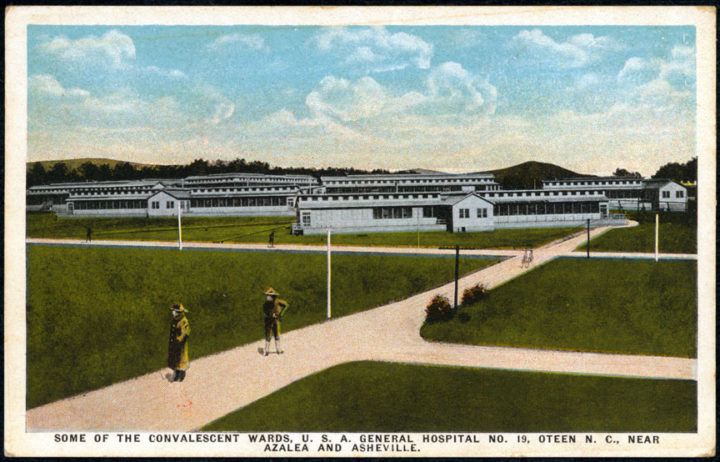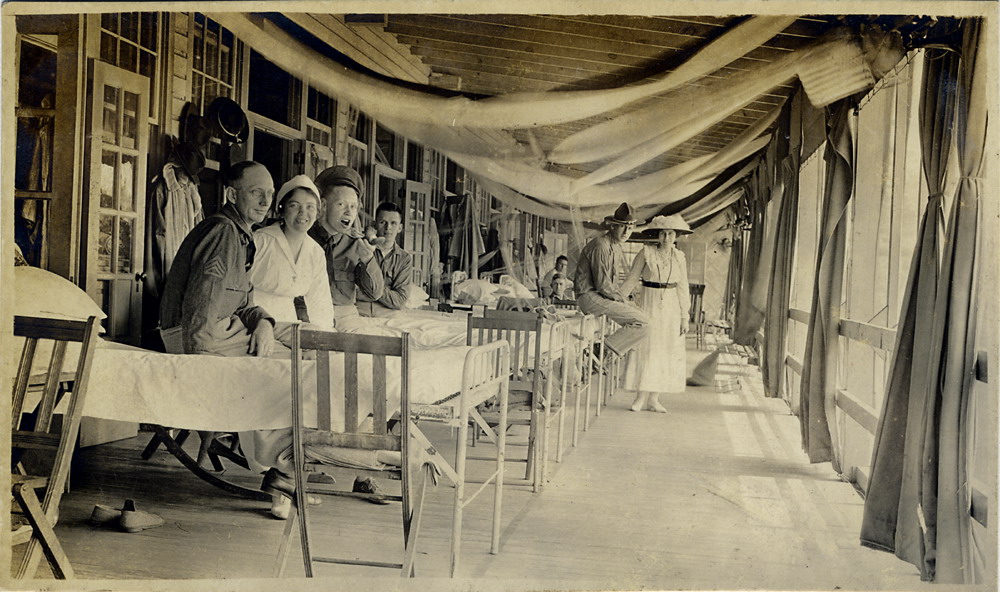Before hopping into this week’s Archives, a few pertinent facts follow to avoid confusion. In 1918, the area that is today known as Oteen was referred to as Azalea. Further, what is today the Charles George VA Medical Center began as U.S.A. General Hospital No. 19 (also referred to as Azalea Hospital). Lastly, the infirmary’s original purpose was to treat World War I soldiers infected with tuberculosis.
On March 19, 1918, The Asheville Citizen reported at least 1,000 men were needed for work on the new Azalea Hospital. Advertisements for general labor soon followed. The job paid 25 cents per hour with time and a half for overtime. Free transportation was also included.
By May, hundreds of general and skilled laborers were feverishly working on the hospital’s infrastructure. During this time, however, a series of accidents left some wondering if the project was jinxed.
On May 14, The Asheville Citizen detailed seven injuries incurred by workers the previous day. It began with a car crash that sent two to Mission Hospital. Another laborer fell into a 12-foot ditch, leaving the man “considerably bruised and suffering a partial paralysis.” Meanwhile, a carpenter was struck in the head by a hammer (resulting in a severe cut), another man injured his hand with a nail, and two additional workers slipped off a roof and scantling, respectively.
“No apprehension is felt for any of the seven men injured in this series of ‘blue Monday’ accidents,” the paper declared. “[A]ll are expected to be able to return to their work in a few days, or a few weeks at most.”
Despite this supposed jinx, the project remained ahead of schedule. On May 30, the paper reported that 30 percent of the hospital’s 70 total structures were completed (later reports would place the total number of buildings above 100). Curious residents could see some of the facilities from the road, the paper wrote, “while others are concealed by the forest.”
The same article included a detailed account of the patients’ wards. In winter, the property’s two steam plants would generate heat for all hospital rooms. During the warmer months, however, patients would reside on the wards’ sleeping porches. Because no vaccine existed, fresh air was considered a crucial element for the treatment of tuberculosis.
“Most picturesque of the building sites is that of the eight wards which will crest the high wooded hill at the father edge of the grounds,” the article continued. “Elevated hundreds of feet above the general level it commands a far stretching view of mountains and river valley, and its nearest building makes a conspicuous show against the sky line.”
The article goes on to describe the day-to-day duties of the roughly 1,500 employees. Some dug ditches for sewer systems, while others spread concrete for roads. Meanwhile, “[g]reat piles of material, wood, brick, stone, plumbing equipment, radiators, sewer pipe, and the great boilers for the heating plant are in sight,” the paper reported.

But the most fascinating element of the workday, the newspaper asserted, came each evening at 6 o’clock, when hired drivers arrived to transport the men home. According to the article:
“When the whistle blows there comes a rush of men, anxious to get home. From up on the hill they come running to hand in the tickets they had gotten in the morning, passing through the turnstiles, a long procession. The autos are quickly jammed with living freight and the Azalea police force is there to keep them from jamming into an inextricable mass. Everybody is good humored but everybody wants to be somewhere else at the same time. Some passengers sit and others sit on them while others stand and belated arrivals grabbing at the flitting car stand on the standdees feet.”
The infirm began arriving at the hospital in September. Meanwhile, the first round of construction continued into November. By December, the site was deemed a permanent government institution. The following year, additional wards were built. According to that year’s completion report, a total of 102 buildings made up the property’s 346 acres.
Today, none of the original structures of the former U.S.A. General Hospital No. 19 remain.
Editor’s note: Peculiarities of spelling and punctuation are preserved from the original documents.




Well done Thomas!
A very interesting item on history. I’m not from N.C. but history is always nice to read up on. Thank you so much. R.G.A.